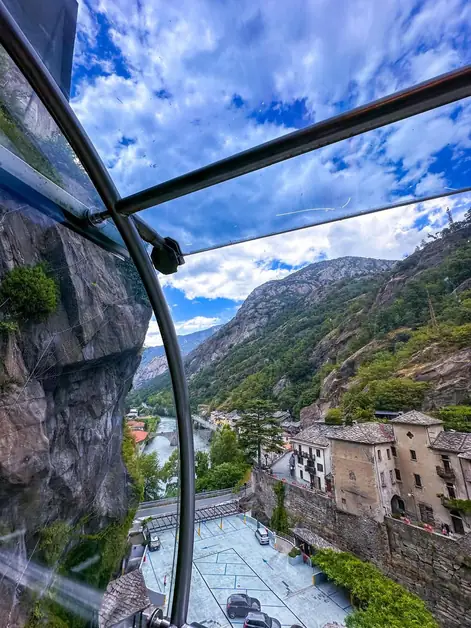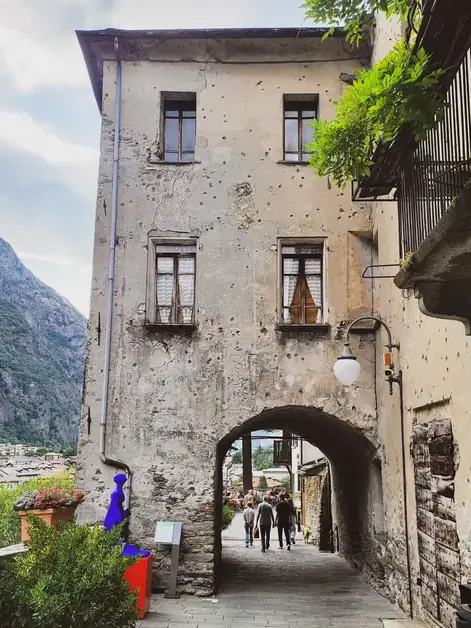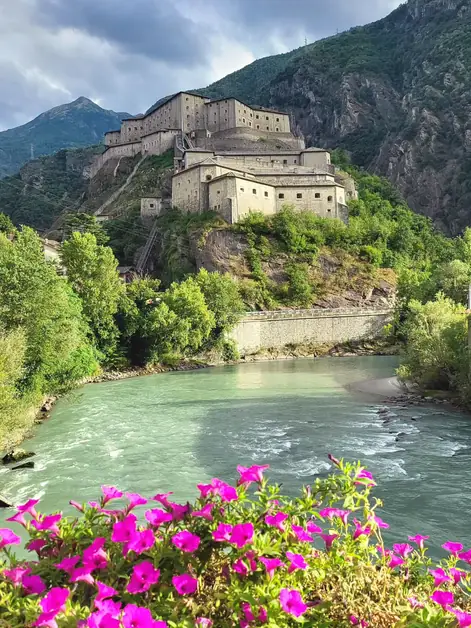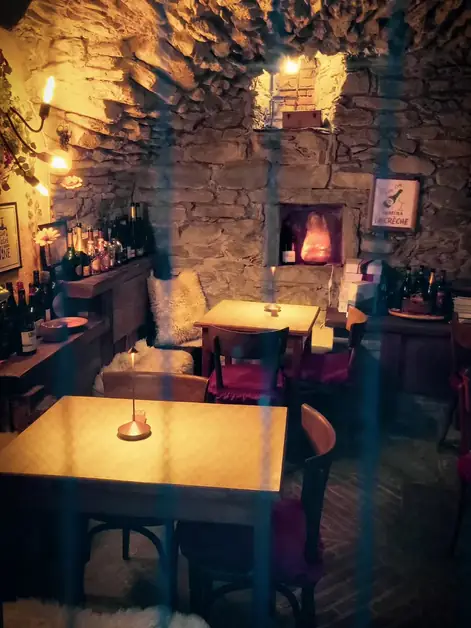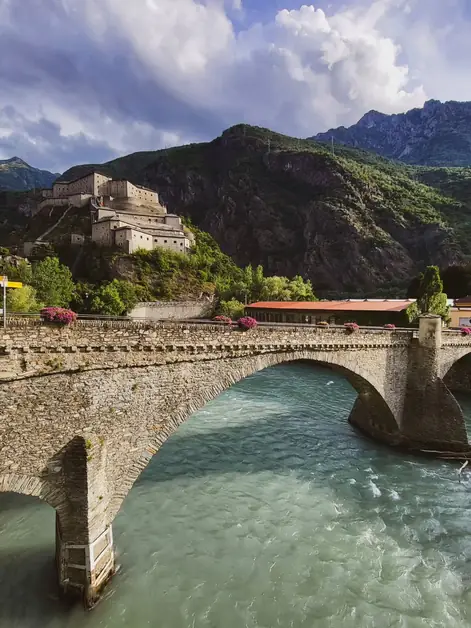Visit the Early Christian Basilica of San Lorenzo in Aosta
Explore the Early Christian Basilica of San Lorenzo in Aosta, a place rich in history and art.
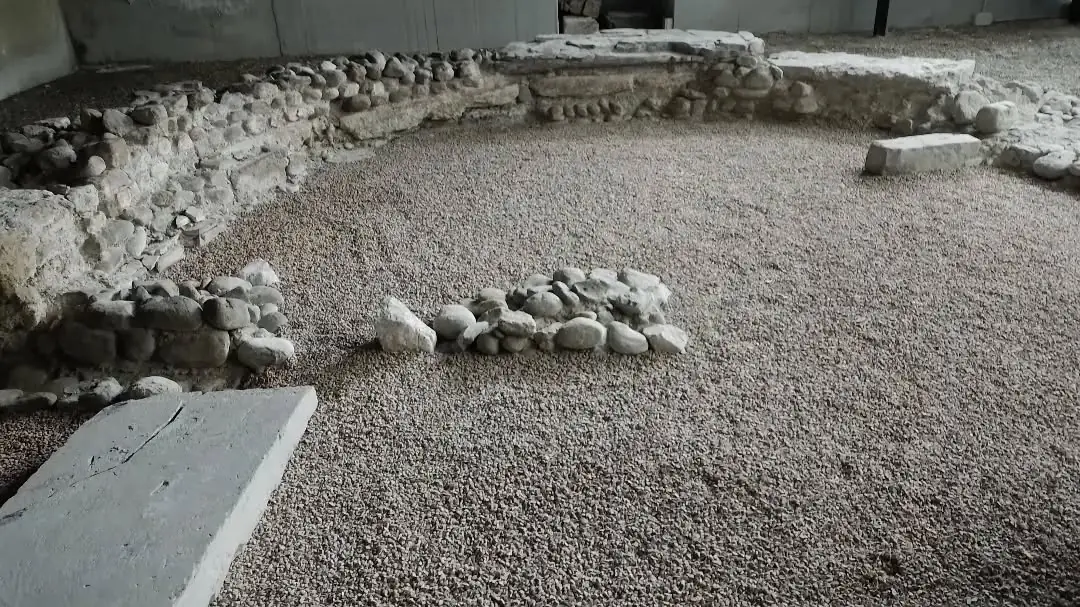
Where is the Early Christian Basilica of San Lorenzo in Aosta?
The Early Christian Basilica of San Lorenzo is located in the historic center of Aosta, just a short walk from the Porta Praetoria and the Collegiate Church of Sant’Orso. It is part of an itinerary that allows for easy visits to the Roman Theatre and the Forensic Cryptoporticus, all reachable on foot in just a few minutes.
How to get to the Early Christian Basilica of San Lorenzo by car?
Those arriving by car in Aosta can take the A5 motorway from Turin to Courmayeur, exit at Aosta Est and follow the signs to the center. The Basilica is located in Piazza San Lorenzo. The historic center is largely a limited traffic zone. For this reason, it is not possible to park directly in front of the entrance. Visitors can leave their cars in paid parking lots in Piazza Plouves, Piazza Ducler, or the multi-storey car park on Via Carrel, all located 5-10 minutes on foot. On holidays, parking spots fill up quickly: it's advisable to arrive early in the morning.
Is it possible to reach the Basilica of San Lorenzo by public transport?
Yes, the Basilica is also easily reachable by public transport. From the Aosta train station, it takes about 10-12 minutes on foot to reach Piazza San Lorenzo. Those arriving by bus from other locations in the Aosta Valley get off at the regional bus terminal, located next to the train station. From there, the route is the same, through the pedestrian historic center.
What is the history of the Early Christian Basilica of San Lorenzo?
The Basilica was built in the 5th century AD as a funerary church. It had a Greek cross plan, with four apses and a dome at the center. In the surrounding area, there was a large necropolis where the city's first bishops were buried, such as Saint Gratus and Saint Agnellus. Over the centuries, the building was modified several times and partially destroyed. In the Carolingian era, the original structure was demolished and rebuilt in a simpler form. The current facade seen today dates back to the 17th century.
What can be seen inside the Basilica of San Lorenzo?
The church that appears today is desecrated but retains a visitable part of great interest. In the basement, there are archaeological remains of the early Christian basilica, with traces of the apses, tombs, and original structures. The exhibition is enriched by explanatory panels that tell the story of the religious and funerary life of the city in the late Roman and medieval periods. The underground atmosphere is very evocative and allows visitors to perceive the transition from Roman worship to Christianity.
What are the opening hours of the Early Christian Basilica of San Lorenzo?
The Basilica follows seasonal hours: From April to September, it is open from 9:00 AM to 7:00 PM. From October to March, it is open from 10:00 AM to 1:00 PM and from 2:00 PM to 5:00 PM. Hours may vary on holidays or during special events, so it is always useful to check the official tourism website of the Aosta Valley or local notices.
How much does it cost to visit the Basilica of San Lorenzo in Aosta?
Entrance is not separate but is part of the cumulative ticket “Aosta Archeologica,” which allows visiting multiple sites with a single ticket. The ticket includes: Early Christian Basilica of San Lorenzo, Roman Theatre, Forensic Cryptoporticus, Regional Archaeological Museum. The average cost is around 8-10 euros depending on the full or reduced fare.
What is the best time to visit the Early Christian Basilica of San Lorenzo?
The Basilica is an indoor location, so it can be visited in any season. In summer, it serves as a cool and sheltered stop during a walk among the Roman monuments of the city. In winter, when temperatures are low and snow blankets the surrounding mountains, the underground visit offers an even more unique atmosphere.
What other attractions are near the Basilica of San Lorenzo?
Around the Early Christian Basilica, some of the most famous monuments of Aosta are concentrated: the Roman Theatre with its imposing arches. Porta Praetoria, the ancient gateway to the Roman city. Collegiate Church of Sant’Orso, with its medieval cloister and frescoes. Forensic Cryptoporticus, an underground gallery from the Roman era. All these sites are within walking distance and are part of the main tourist route of the city.
